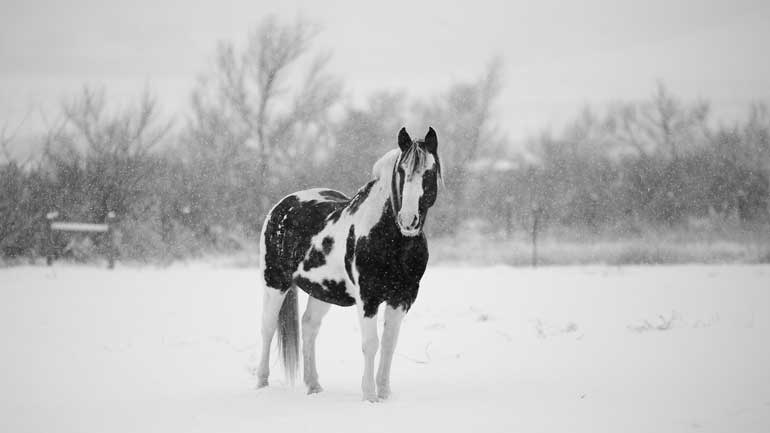Some myths go around about wintertime that affect farriers, and it's time we dispel a few of them. The idea that horses need to rest their feet in the winter has been around for hundreds of years. People tell us that their horse needs to rest his feet.
Long ago, when horses were doing a full day of work every day, they needed to be rested. Their shoes would wear off to the point where they would get reshod every four weeks. After a while, their feet got full of holes. They'd lose a shoe, and their hoof wall would be torn apart there was no way to hang a shoe on that foot to make it serviceable for work.
At that point, the horse would rest. It's not the feet that would rest. The horse would get a break from his job so that he could grow enough hoof for the farrier to be able to shoe him. Horse's feet don't take a nap in the wintertime. They don't need to rest.
Myth #2
Another myth is that mud causes thrush. Thrush is an anaerobic bacteria that lives in the intestinal tract of hooves animals. When they poop and step in it, they introduce thrush to their feet. The mud seals the foot, creating an anaerobic environment so that thrush can spread. The mud does not create the thrush. Substandard horse husbandry creates thrush, lack of picking up the manure, and allowing the horse to step in it.
Myth #3
Mud sucks off shoes. The horse walks in mud, and much like a rubber boot on a person, it gets stuck, and the shoe comes off. That doesn't happen. Two-thirds of a horse's weight is on his front end. When he walks in the mud, his front end sinks deeper.
He has trouble getting his front feet out of the mud, delays the break-over, and the hind feet come up and step off the shoes. The mud doesn't suck off the shoe. We would have dislocated joints if mud could do that.
Myth #4
Then the big myth, "I'm not riding much once the weather gets bad, so he doesn't need shoes." Well, if he's set well for barefoot then perhaps. But why do we shoe horses? Not just for the wear, we also shoe horses to protect the bottom of the foot. Frozen ground is as hard as concrete. If the horse has diseases inside that foot, it needs to be protected. He's got to wear shoes year-round.
We put shoes on horses to change the weight-bearing. When farriers trim and shoe a horse, they evenly distribute the weight on the foot and up the limb. Horses with poor conformation may need to have a shoe moved to the outside, inside, or further back. Those changes have to be made with a shoe they can't be made barefoot.
We shoe horses for traction. Ice, mud, and grass are slippery. We shoe horses to give stability to their movements. We shoe for lameness, particularly chronic lameness like clubbed feet, or founder. Those types of horses need to stay in shoes to be able to protect the foot from the disease.
It doesn't matter whether you're riding or not. Your horse still needs that protection. There are different types of shoes for different types of riding disciplines. Even though you may not be competing as heavily, if you're practicing at all, we need to keep the same footwear going year-round for your horse.
We shoe to compensate for gate abnormalities like overreaching and forging. If you pull the shoe, that horse's hind end might come up and tag his front end, creating problems for you. Shoeing horses is not just a matter of whether or not you ride.
Talk to your farrier. Find out why he or she advises you to keep shoes on your horse and keep them on year-round. The feet don't need to rest. Many horses can wear shoes 25-30 years and live a long, happy life.
Want to become a professional farrier? Apply Now
